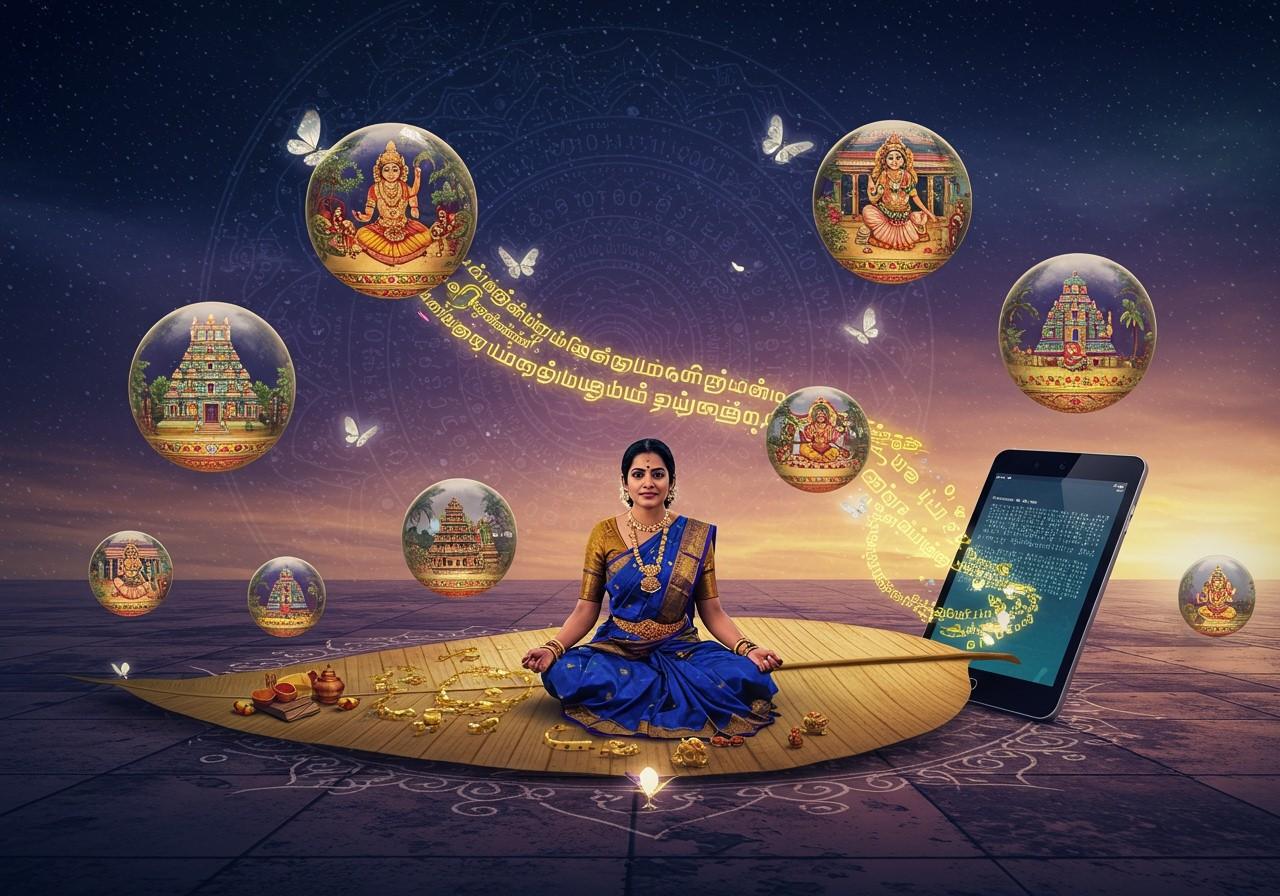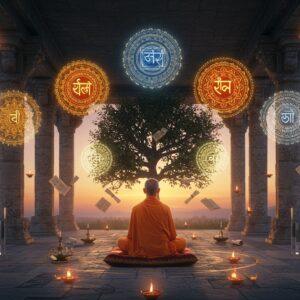
Tamil literature boasts a rich history spanning over two millennia, encompassing diverse genres like poetry, epics, and philosophical treatises. As technology progresses, exploring Tamil literature’s adaptation to the digital era is crucial. This article examines the challenges and opportunities arising from digitizing Tamil literature, focusing on its online presence, images, and dedicated websites preserving and promoting this cultural gem.
Historical Context of Tamil Literature
Origins and Evolution
Tamil literature’s roots trace back to the ancient Sangam literature. Notable historical works include:
- Thirukkural: A timeless collection of couplets offering profound insights into ethics, morality, and righteous living. Its wisdom continues to resonate with readers across generations.
- Silappatikaram: A captivating epic narrating Kannagi’s poignant story, exploring themes of justice, love, and societal injustice. Its intricate plot and vivid characters make it a cornerstone of Tamil literature.
- Manimekalai: A thought-provoking sequel to Silappatikaram, delving into Buddhist philosophies and spiritual themes. It provides a contrasting perspective on life and the pursuit of enlightenment.
These works profoundly influence South Indian culture, preserving Tamil identity. Traditional literary forms continue to shape contemporary Tamil writing, showcasing the heritage’s richness.
Preservation Efforts
Preserving ancient manuscripts involves their transition into digital formats. Scholars and poets play a vital role in upholding the literary tradition. Digitization efforts encompass:
- Scanning ancient manuscripts: Carefully digitizing fragile manuscripts ensures their preservation for future generations while making them accessible to a wider audience. This process requires specialized equipment and expertise to maintain the integrity of the original documents.
- Digital archiving: Storing digitized manuscripts in secure online repositories protects them from physical damage and deterioration. Digital archives provide a centralized location for accessing and studying these valuable texts.
- Creating online databases: Organizing digitized manuscripts into searchable databases facilitates research and access for scholars and enthusiasts. These databases often include metadata, allowing users to easily locate specific texts and related information.
Challenges in the Digital Age
Language Preservation and Digital Archiving
Digitizing Tamil literature presents unique challenges:
- Maintaining authenticity of original texts: Ensuring the accuracy and integrity of digitized versions is paramount. This requires rigorous quality control and comparison with original manuscripts to prevent errors and misinterpretations.
- Technical hurdles in converting ancient scripts: Converting ancient Tamil scripts into digital formats can be complex due to variations in calligraphy and the need for specialized software. Optical character recognition (OCR) technology plays a crucial role in this process.
- Potential loss of cultural context during translation: Translating Tamil literature into other languages requires sensitivity to cultural nuances and idioms to avoid misrepresenting the original meaning. This often involves collaboration between language experts and cultural scholars.
Limited resources and funding further complicate large-scale digitization. Some traditionalists resist literary works’ digital transformation. Creating user-friendly digital platforms catering to Tamil literature enthusiasts remains a challenge.
Opportunities for Tamil Literature Online
Increased Accessibility and Global Reach
Digitizing Tamil literature offers numerous advantages:
- Digital libraries and online archives promote preservation: Digital platforms safeguard literary treasures from physical damage and make them readily available to a global audience, ensuring their long-term preservation.
- Social media fosters a community of literature lovers: Online communities enable enthusiasts to connect, share their passion for Tamil literature, and engage in discussions about their favorite works, fostering a sense of shared appreciation.
- E-books and audiobooks enhance accessibility for younger generations: Digital formats cater to modern reading habits, making Tamil literature more appealing to younger audiences and fostering a continued interest in the literary tradition.
- Online courses and webinars educate people about Tamil literary heritage: Educational initiatives provide accessible opportunities for individuals to learn about the rich history and significance of Tamil literature, contributing to its preservation and appreciation. These programs often feature expert lectures, interactive discussions, and access to digital resources.
Successful projects have significantly contributed to Tamil literature’s online presence, enhancing accessibility worldwide.
Key Tamil Literature Websites
Prominent Platforms
Several websites dedicated to Tamil literature include:
- Project Madurai: A pioneering initiative digitizing and publishing ancient Tamil literary classics for free, providing access to a vast collection of texts. Its user-friendly interface makes it easy to navigate and explore the rich literary heritage.
- Tamil Virtual Academy: An online platform offering courses and resources for learning Tamil language and literature, bridging traditional learning with modern technology. Its interactive modules cater to different learning styles and levels of proficiency.
- Tamil Heritage Foundation: An organization dedicated to preserving and promoting Tamil cultural heritage, providing access to manuscripts, inscriptions, and literary works. Its online archive serves as a valuable resource for researchers and enthusiasts alike.
These platforms offer digital collections, archives, and community features like forums and discussion boards, promoting contemporary Tamil writers and poets while preserving literary works. They serve as hubs for connecting with fellow enthusiasts and engaging in discussions about Tamil literature.
Role of Tamil Literature Images
Visual Representations
Visual representations significantly enhance the reading experience. Digital platforms can incorporate images and multimedia to bring Tamil literature to life. Illustrations of ancient manuscripts or artistic renditions of literary scenes make the content more engaging.
Project Madurai, for example, focuses on digitizing and preserving ancient Tamil manuscripts with visual elements. These efforts help maintain the texts’ historical context and cultural significance, ensuring readers appreciate traditional Tamil scripts’ beauty and intricacy.
Contemporary Visual Storytelling
Contemporary visual storytelling in Tamil literature utilizes digital tools and software to create and share literary art. Illustrators and artists employ modern technology to interpret classic texts and produce visually captivating works. These visual elements attract younger audiences, making Tamil literature more accessible and appealing.
Interactive and augmented reality experiences offer innovative ways to explore Tamil literary works. Imagine reading Silappatikaram and experiencing an augmented reality scene of Kannagi’s journey. Such innovations bridge tradition and technology, providing immersive experiences for readers.
Importance of Metadata
Metadata is crucial in preserving Tamil literature images’ context and significance. Proper cataloging ensures accurate representation and searchability of visual elements. This maintains the integrity of original works while making them accessible to a wider audience.
Opportunities for Tamil Literature Online (Continued)
Digitizing Tamil literature increases accessibility and global reach. Digital libraries like the Tamil Digital Library and ChennaiLibrary.com, as referenced in search results from 2025-01-20, offer extensive collections of Tamil books and resources. These platforms preserve and promote Tamil literary heritage, making it accessible worldwide. Noolulagam, established in 2010 as per the same search results, provides a valuable resource for purchasing Tamil books online.
Social media and blogging platforms foster communities of Tamil literature enthusiasts. They provide spaces for readers to discuss and share their favorite works, creating a sense of belonging and encouraging engagement with Tamil literary traditions.
E-books, Audiobooks, and Online Courses
E-books and audiobooks make Tamil literature accessible to younger generations, offering convenient ways to enjoy literary works on the go. Noolulagam‘s worldwide shipping, referenced in the 2025-01-20 search results, makes it easier for readers globally to access Tamil literature.
Online courses and webinars educate people about Tamil literary heritage. These initiatives spread knowledge and appreciation for Tamil literature, ensuring its transmission to future generations.
Challenges in the Digital Age (Continued)
Maintaining authenticity during digitization is crucial. Technical hurdles in converting ancient scripts and potential loss of cultural context during translation pose further challenges. Limited resources and traditionalist resistance can also hinder digitization efforts.
Future of Tamil Literature in the Digital Age
Embracing Technology
Tamil literature’s future embraces digital advancements. AI and ML hold potential for digitizing and analyzing literary texts. VR can offer immersive literary experiences, while blockchain technology ensures authenticity and ownership of digital literary works.
International Collaborations
International collaborations can promote Tamil literature globally. Partnerships with educational institutions, cultural organizations, and tech companies foster growth and sustainability, ensuring Tamil literature continues to inspire future generations.
Continued education and awareness are crucial for preserving Tamil literature’s cultural heritage in the digital age. By embracing technology, we can balance tradition and innovation, ensuring this cultural treasure thrives for years to come.
How Poojn.in Supports Tamil Literary Traditions
Poojn.in contributes to preserving and promoting Tamil literary traditions through its specialized collection of religious and cultural items. The platform offers essential materials for Tamil rituals and ceremonies mentioned in classical texts, making them accessible to Tamil families across India and abroad. Bel malas, Tulsi malas, and other items essential for traditional Tamil worship can be found on Poojn.in. These products are accompanied by detailed descriptions in both Tamil and English, facilitating understanding for the current generation.
Poojn.in’s commitment to quality ensures that items essential for Tamil rituals remain true to traditional specifications. The platform acts as a bridge between classical Tamil literary traditions and modern convenience, allowing devotees to practice their faith authentically in the digital age. Visit Poojn.in to explore the complete collection of Tamil ritual items and religious materials.
FAQs on Tamil Literature in the Digital Age
What are the main challenges faced by Tamil literature in the digital age?
Challenges include digital piracy, inadequate digital archiving, and limited accessibility for older generations unfamiliar with technology.
How has digital technology provided opportunities for Tamil literature?
Digital technology has expanded Tamil literature’s reach globally through e-books, online platforms, and social media, connecting authors with readers and promoting their work.
Are there specific websites dedicated to Tamil literature?
Yes, numerous websites dedicated to Tamil literature offer e-books, articles, and discussion forums.
Can I find images related to Tamil literature online?
Yes, various websites and digital libraries provide images like book covers, manuscripts, and illustrations related to Tamil literature.
How can I read Tamil literature in Tamil online?
You can read Tamil literature in Tamil online through platforms offering e-books, digital magazines, and literary blogs. Some websites also provide free access to classic Tamil texts.
What role do social media platforms play in promoting Tamil literature?
Social media platforms facilitate the promotion of Tamil literature by enabling authors to share their work, interact with readers, and engage in literary discussions.
Are there digital archives of ancient Tamil literature?
Yes, digital archives exist to preserve ancient Tamil literature, providing researchers and readers access to classic texts and manuscripts.
How can young readers benefit from Tamil literature in the digital age?
Young readers benefit from easy access to diverse texts, participation in online literary communities, and the discovery of new authors through digital platforms.
Conclusion
Tamil literature faces both challenges and opportunities in the digital age. Visual representations and metadata are essential for preserving and enriching the literary experience. Projects like Project Madurai and Tamil Virtual Academy bridge tradition and technology, while e-books and online courses enhance accessibility for younger generations. However, challenges like maintaining authenticity and overcoming technical hurdles persist. Embracing technology through innovations like AI, VR, and blockchain, along with international collaborations and increased awareness, can ensure Tamil literature continues to inspire future generations.


